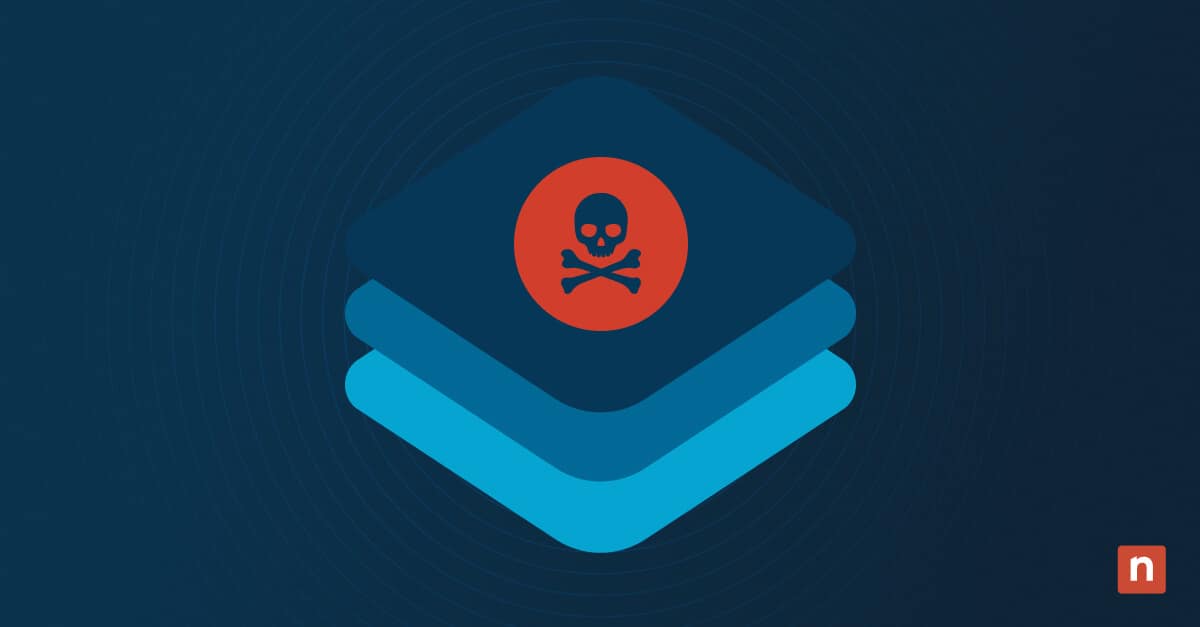Key Points
- Prioritize Human Communication: The difference between an MSP and a top-performing MSP lies in communication, not just technology. Build trust through consistent, empathetic client engagement.
- Align Every Interaction with Value: Use every ticket update, service call, and email as a chance to remind clients of ROI, uptime improvements, cybersecurity protection, and business continuity.
- Adopt Strategic MSP Client Engagement: Schedule structured monthly business reviews (MBRs) or quarterly business reviews (QBRs) to showcase measurable results—cost savings, security wins, and productivity gains.
- Quantify and Visualize ROI: Use scorecards and dashboards to track KPIs such as tickets resolved, downtime prevented, and risk reduction. Demonstrating value in numbers improves retention and upsell success.
- Highlight Positive Outcomes, Not Just Pain: Don’t only sell on fear or compliance. Show how clients benefit from MSP partnership: smoother operations, stronger cybersecurity posture, and strategic IT growth.
What’s the difference between a successful MSP and a very successful MSP? While it might seem like technology must have something to do with it, quite often the answer is far more human and interpersonal.
It’s too easy to forget that an IT business isn’t just about the IT — and that the business component is very reliant on communication. From generating new leads, to closing deals, all the way to serving and retaining clients, you have to talk the right talk.
MSP value communication is essential when developing the customer experience for your clients. All those touch points add up, and those interactions weigh more heavily on the perception of your brand than product or pricing.
In this article, we’ll look at how a managed service provider (MSP) should be communicating value through all stages of the customer journey — including after the agreement is signed.
Bridge communication gaps and ensure clients see value in your work.
MSP client engagement strategies
We’ve worked with hundreds of MSPs, and in the process we’ve had the pleasure of getting to know many of them. We’ve learned about their successes, their innovations, and their challenges.
One struggle that comes up quite often is the question of not only how but also when to talk to prospects and clients. Many MSP owners wear multiple hats and don’t have a lot of time to spare, so they let communications fall by the wayside almost out of necessity. At that point, the question of “when to communicate” gets answered with an unfortunate “only when I have to”.
But what opportunities are being lost when communication isn’t given due consideration? Are you missing out on new business? Referrals? Are your clients losing sight of why they hired you in the first place?
Day-to-day communications
For many MSPs, regular communication with clients comes from ticket fulfillments, service calls, and the occasional check-in. These are important touchpoints from a technical standpoint, but it’s important to remember that they’re also opportunities to build your relationship and communicate the value you’re providing.
Long term communication and strategic conversations
Most MSPs are already conducting reviews, such as monthly business reviews (MBRs) and quarterly business reviews (QBRs) , with their clients. These check-ins happen four to twelve times a year and give the MSP a chance to
- go over their performance,
- refine their strategic plan, and
- suggest new avenues of innovation,
usually in the form of meetings and involving key stakeholders in the client’s organization.
For an MSP, these reviews can be an important way to engage with clients on a more strategic level every quarter, but it’s not the most optimal time to suggest new services or projects. When reviewing your MSP’s performance over the previous months, it’s wise to remind the client of how you’ve had a positive impact on their business.
This may mean reporting on cybersecurity activity (potential breaches that you’ve helped prevent), productivity gains, or cost savings. If you don’t have a method of tracking these metrics, you can devise a scorecard based on known costs, risks, etc.
The typical check-in discussion will then progress to current and proposed strategic initiatives as well as, any roadblocks or challenges. Try to avoid discussing day-to-day topics, minor details, or anything else that is better handled through tactical service calls.
Want to learn more about what NinjaOne’s RMM can do for your MSP? Explore our RMM FAQs to learn more about key features and find answers to common questions.
Follow through
Communication loses all of its potency if it’s not backed up with action and reinforced through diligent follow-up. Becoming a well trusted advisor to clients means staying top of mind and close to hand when needed. Continue proving value by addressing problems quickly, and fostering that strategic relationship.
For example, any potential opportunities or concerns revealed during the MBR/QBR should be pursued after the meeting is over. You will still need those multiple touch points to cultivate a positive customer experience and keep your proposed innovations at the front of the clients’ mind.
This is also relevant if you’ve promised to act around any concerns or challenges the client is facing. It goes without saying that an MSP should never make promises that they can’t (or won’t) follow through on. If you’ve agreed to a resolution, pursue that resolution relentlessly and always strive to overdeliver.
Communicating value as an MSP
When it comes to communicating value–especially in a marketing sense–a few terms come to mind for most MSP.
The most commonly uttered phrase in that category will probably be pain points. In short, these are the challenges and stressors faced by your prospect or ideal client. The idea is to communicate value by addressing those pain points.
If you’re struggling with X, we can help you by Y.
The challenge here is that some of the most commonly-used pain points in the IT channel are not fully fleshed out. Remember that great communication comes from empathy and truly understanding your audience.
In this case, that means leveraging pain points that are especially relevant to your prospect. These should be pains they experience day-to-day, challenges that they face on a regular basis. Most importantly, the most effective pain points are emotional.
When you understand the simplicity behind that, it’s easy to see why something like marketing can be so difficult. It requires the added step of creating the pain before the pain even needs to be addressed.
What strong MSP marketers understand is that it’s far more effective to address the real, tangible pains that the client is already experiencing. This is where an intimate knowledge of that target consumer is like gold — if you know what similar clients have struggled with, you can better communicate the solutions that resonate with that audience.
Benefits of value communication as an MSP
It’s important to remember that pain and fear are not the only–and generally not the best–ways of communicating value. An MSP doesn’t have to be the rescuer or savior to be valuable.
Many consumers are looking for positive results rather than solutions to problems. It’s best to touch on both possibilities by not only mentioning pain points but also highlighting the benefits that come from hiring your MSP.
The mindset here is one of “What do they want?” rather than “Where do they hurt?” Evaluate your audience to determine their aspirations and goals and the payout can be immense. There’s huge perceived value in being something desirable rather than a necessity that’s begrudgingly purchased to avoid compliance problems or downtime.
This leads us back to the importance of communication and the customer experience. One of the key places an MSP can build themselves up is in the way they relate to their customer base. This is where brand identity — a largely misunderstood concept — becomes a game changing business development tool.
A managed IT service provider that doesn’t stand apart in some way will have a very difficult time rising above the perception of being a commodity. This means that “good customer service” isn’t enough. It takes creativity and an injection of personality to really put a shine on your communications
Emerging MSP talking points
The best pain points (and talking points) are specific to your audience, but there are a few things that could make for effective value communication:
- With the growing use of AI and Machine Learning in certain sectors, some industries—such as retail and healthcare—will likely need help from MSPs in adopting the latest tools.
- Speaking of AI, frameworks such as the EU AI Act aim to regulate the use of AI across different sectors and shed light on the effects of this technology on both businesses and their clients. Compliance with these regulations is worth mentioning when discussing which tools add value to a business.
- With cyberattacks becoming more rampant, several MSPs have now taken to adopting a zero-trust architecture, which is built on the practice of “trusting nothing” at first and then adding “trustworthy” features as time goes on. As mentioned earlier, cybersecurity is a tricky but ultimately necessary pain point to discuss with your client.
Even the best MSPs lose clients when communication fails.
💡 Discover how NinjaOne helps maximize profits and improve communication
How poor communication costs an MSP clients
Now that we’ve talked about what to do, it’s only fair to take a look at what not to do. All told, ineffective communication is responsible for more client turnover than any other mistake an MSP can make. As we all know, even technical problems are exacerbated when communication breaks down.
So what are the major pitfalls to avoid?
Poorly-managed expectations
The disconnect between a client’s experience and the expectations set during the sales process has become all too common. Being authentic and genuine during the “courting process” of getting the agreement. Never exaggerate your level of expertise or capabilities.
Breached SLAs
Service-level agreements (SLAs) are promises that the MSP makes to their clients. Any breach of the SLA is, in reality, a breach of trust and can put the client–provider relationship on an extremely rocky road. Make sure your targets are transparent and attainable, and that you’re never put in a situation where you’re forced to underdeliver.
Poor customer service
Most MSPs don’t need to be reminded that customer service sits at the heart of their business. Unfortunately, poor customer service is never a deliberate error and usually results from being overwhelmed or not using the right tools to manage workloads. Even the best MSPs can run into situations where a star employee quits or they have to put too many fires out at once. In these cases, more communication is generally more effective–even though it can feel like more work piled on your plate.
Cumbersome tools
This can be both an internal problem and one that affects your solution stack. One of the reasons many veteran MSPs have steered away from ala carte or tiered offerings is that the consumer can become confused about what their agreement does and doesn’t include.
(We’ve all heard of the case where a client experiences a cyberattack incident and blames the MSP because of the “I thought you were taking care of that” assumption.)
Simplifying and consolidating your solution stack and your offering can help avoid countless headaches in the future.
Then there’s the issue of your own tools standing in the way of your success. Too many tools, especially when they don’t integrate properly, create more work and more chances for miscommunication. It’s when balls get dropped that MSPs experience the biggest hits to their value perception.
Improve communications and value with NinjaOne
On that last point, a feature-rich tool like NinjaOne can be a boon to delivering value. MSP who minimize their labor costs while overdelivering on customer experience can devote more time and energy to discovering their hidden value and communicating those benefits to their clients and prospects.
NinjaOne helps your MSP reach that level by putting a vast array of resources and tools behind a single pane of glass for easy management of clients — whether you’re handling ten endpoints or ten thousand. From RMM to security, it’s a platform that works with your goals, not against them.
Not a Ninja partner yet? We’ve still got plenty of resources available to help your MSP succeed! Visit our blog for helpful guides and, sign up for Bento to get important guidance in your inbox.
If you’re ready to become a NinjaOne partner, schedule a demo or start your free trial to see why over thousands of customers have already chosen Ninja as their partner in growth.







